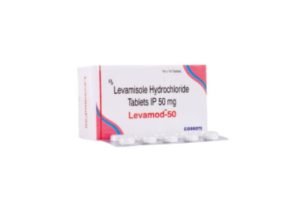
Here is a detailed overview of Carbenicillin:
Description:
Carbenicillin is a beta-lactam antibiotic belonging to the penicillin class, specifically a ureidopenicillin. It is effective against a range of Gram-negative bacteria and some Gram-positive bacteria. Carbenicillin is used to treat infections caused by bacteria that produce penicillinase (beta-lactamase), which makes them resistant to many other penicillins.
Brand Names:
- Geocillin (most commonly used brand)
Available Forms & Strengths:
- Injection (IV/IM):
- Carbenicillin disodium: Typically available in vials containing 500 mg, 1 g, or 2 g.
Uses:
Carbenicillin is used to treat infections caused by susceptible bacteria, including:
- Urinary Tract Infections (UTIs): Particularly those caused by Pseudomonas aeruginosa, Proteus mirabilis, and Escherichia coli.
- Respiratory Tract Infections: Including pneumonia, particularly when resistant Gram-negative bacteria are involved.
- Intra-abdominal Infections: Such as peritonitis or infections post-surgery.
- Bone and Joint Infections: Particularly those involving Pseudomonas aeruginosa.
Side Effects:
- Gastrointestinal: Nausea, vomiting, diarrhea.
- Allergic Reactions: Rash, itching, urticaria, and severe allergic reactions such as anaphylaxis (rare).
- Hematologic: Rarely, can cause changes in blood counts such as leukopenia or thrombocytopenia.
- Renal: Potential for nephrotoxicity, especially with prolonged use or high doses.
- Superinfections: Overgrowth of non-susceptible organisms like Clostridium difficile.
Dose:
- Adults:
- IV/IM: Typically 1 g to 2 g every 4-6 hours, depending on the severity and type of infection.
- Children:
- Dosing is generally based on weight and infection severity. Typical pediatric dosing is 50-100 mg/kg/day divided into 4-6 doses.
Contraindications:
- Hypersensitivity: History of allergic reactions to penicillins or other beta-lactam antibiotics.
- Renal Impairment: Use with caution in patients with kidney dysfunction due to the risk of accumulation and nephrotoxicity.
Drug Interactions:
- Anticoagulants: Carbenicillin may enhance the effect of anticoagulants like warfarin, increasing bleeding risk.
- Other Antibiotics: The combination with other antibiotics can sometimes lead to antagonistic effects.
- Methotrexate: Carbenicillin may reduce the renal clearance of methotrexate, potentially increasing toxicity.
Warnings:
- Allergic Reactions: Severe reactions can occur, including anaphylaxis. Immediate discontinuation and treatment are required if these occur.
- Renal Monitoring: Regular monitoring of renal function is advisable during treatment, particularly in patients with pre-existing kidney issues.
- Superinfection Risk: Prolonged use can lead to overgrowth of resistant organisms or fungi.
Special Considerations:
- Pregnancy: Classified as Category B. Generally considered safe for use during pregnancy, but should be used when clearly needed.
- Breastfeeding: Carbenicillin is excreted in breast milk in small amounts. It is usually considered safe but should be used with caution.
- Pediatric Use: Carbenicillin is used in children, but dosing should be adjusted based on body weight and the infection being treated.
Doctor Advised:
- Complete the full course of therapy as prescribed to ensure effectiveness and reduce the risk of resistance.
- Inform the healthcare provider about any history of allergic reactions to penicillins.
- Monitor for side effects such as gastrointestinal symptoms or signs of allergic reactions, and seek medical attention if they occur.
Conclusion:
Carbenicillin is a potent antibiotic primarily used for treating infections caused by Gram-negative bacteria, particularly those resistant to other penicillins. It is effective for various infections, including UTIs and respiratory infections. While generally effective, it requires careful monitoring due to potential side effects, especially in patients with renal impairment or those on multiple medications.







